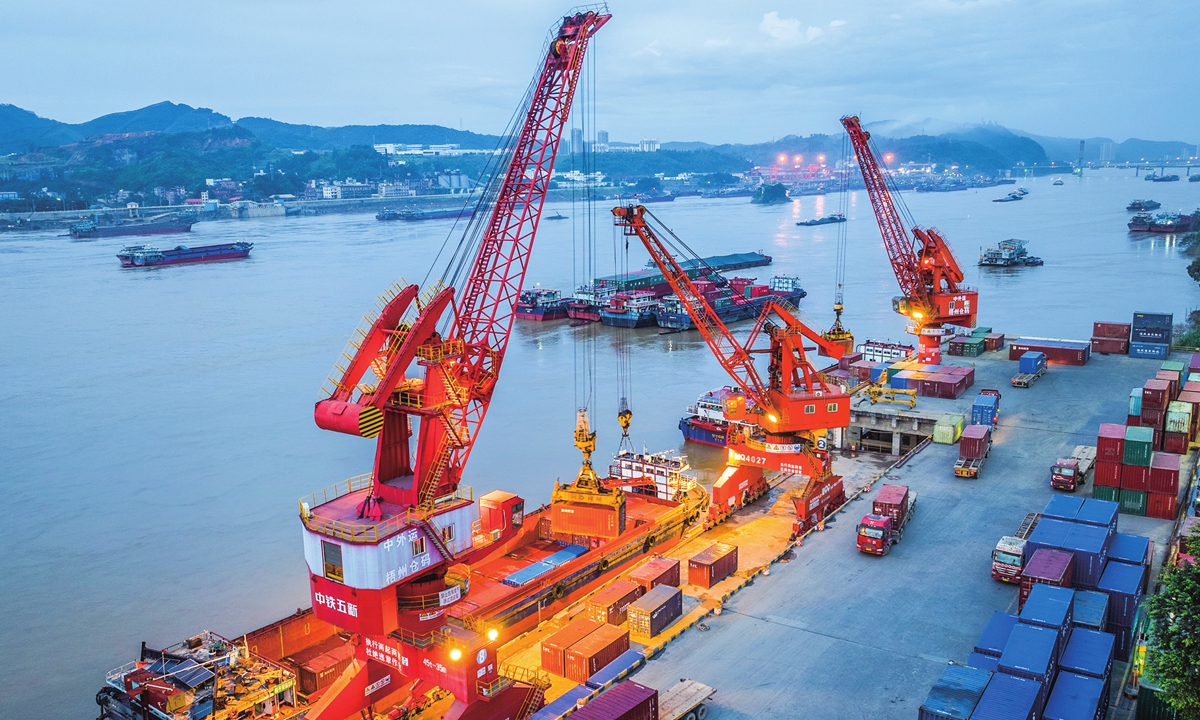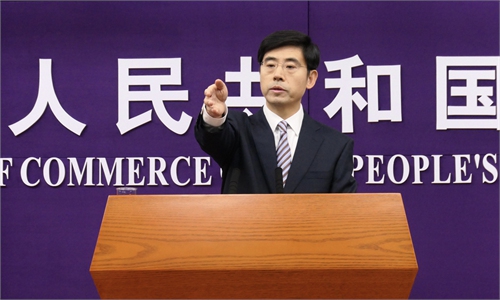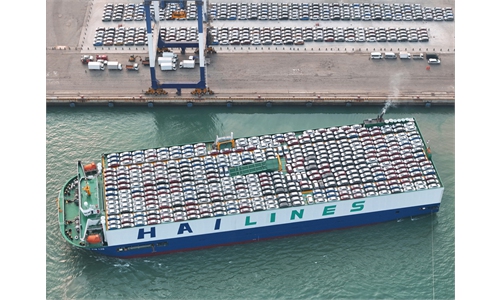China’s foreign trade in H1 up 6.1%, showing positive momentum of economy, denying ‘decoupling’ noise
Better-than-expected performance indicates steady advance of Chinese modernization

Trucks shuttle back and forth in a container terminal in Wuzhou, South China's Guangxi Zhuang Autonomous Region on June 26, 2024. China's foreign trade in the first five months of 2024 recorded a yearly increase of 6.3 percent amid the country's steady economic recovery. Photo: cnsphoto
China set a new record for foreign trade in goods in the first half of 2024, representing a year-on-year increase of 6.1 percent to 21.17 trillion yuan ($2.9 trillion), data released by the General Administration of Customs (GAC) showed on Friday.
The data was released ahead of the third plenary session of the 20th Communist Party of China Central Committee, which will be held from July 15 to 18 in Beijing. Chinese experts noted that the better-than-expected trade performance indicated that despite geopolitical uncertainties, Chinese modernization is steadily advancing with the continuous improvement in its industrial structure.
Over the past years, China has continued to open its doors to the world, greatly contributing to the stability of the global industrial chain and supply chain, injecting more growth momentum into the world's economy, analysts said.
Data also showed that the world increasingly needs China's high value-added products, strongly denying the US-led "decoupling" attempts, they noted.
According to the GAC, the country's foreign trade for the first time in the same period in history exceeded 21 trillion yuan. Moreover, the growth rate of the country's foreign trade accelerated quarter by quarter, growing 7.4 percent in the second quarter, 2.5 percentage points higher than the first quarter and 5.7 percentage points higher than the fourth quarter of last year.
In June, the country reported a 5.8 percent of growth in its foreign trade, continuing to maintain good momentum of stable development, according to the GAC.
"The data not only showed the steady growth of China's foreign trade, but also reflected the country's resilience and adaptability against global economic fluctuations," Wang Peng, an associate research fellow at the Beijing Academy of Social Sciences, told the Global Times on Friday.
Moreover, the better-than-expected performance showed that Chinese modernization is steadily advancing, and the country's products have become more competitive in the global market thanks to its industrial upgrading, said Tian Yun, a veteran economist based in Beijing.
"Boosted by foreign trade, the country's economic growth in the first six months will reach about 5 percent," Tian said, predicting that the total value of China's imports and exports for the whole year will also set a new high.
Exports of China-made electromechanical products have become one of the highlights of the country's foreign trade from January to June. The GAC said that during the period, China's exports of electromechanical products reached 7.14 trillion yuan, an increase of 8.2 percent, accounting for 58.9 percent of the total value of exports.
Among them, exports of automatic data-processing equipment and its parts and components totaled 683.77 billion yuan, representing an increase of 10.3 percent. Exports of integrated circuits rose 25.6 percent to 542.74 billion yuan, and exports of automobiles stood at 391.76 billion yuan, soaring 22.2 percent compared with the same period last year.
Wang noted that the significant growth of electromechanical product exports is further proof of China's solid position in the global industrial chain, especially in the field of high-tech products.
"Behind this growth are the nation's continued efforts in scientific and technological innovation, industrial upgrading and brand building," Wang said.
Exports in both the electronic information industry and automobile and ship manufacturing saw strong increases in the first six months, further confirming that China's industrial upgrading is progressing smoothly, and its competitiveness in the emerging industries continues to strengthen, Tian told the Global Times on Friday.
Moreover, the fact that China's share of trade in services and goods in the world is still growing shows that the country has not been affected by the "decoupling" efforts of the US and some Western countries, Tian noted.
As the country's exports in June recorded an 8.6 percent growth from a year earlier in dollar terms, some foreign media outlets reported that China's trade surplus soared to the highest since at least 1990 in June, alleging that the increase in manufacturing and shipments and the increasingly unbalanced nature of Chinese trade has rung alarm bells around the world.
Tian blasted the above-mentioned remarks, noting that the allegation reflects the concern of some countries that China's high value-added products will have an impact on local enterprises when they enter their markets.
"The excellent performance of China's exports was based on the competitiveness of domestic industries and the recognition of international markets. The popularity of Chinese products in the global market is due to their advantages of cost-effectiveness and reliable quality. Protectionist practices will only undermine the fairness and transparency of international trade," Wang noted.
The Chinese government has been strengthening its support and services for its opening-up policy, providing both domestic and foreign-funded enterprises with a broader space for development and a fairer competitive environment.
Four Chinese government departments including the Ministry of Commerce and the People's Bank of China on Friday jointly issued opinions on strengthening the coordination of commerce and finance to support the high-quality development of cross-border trade and investment.
The opinions cover 11 measures including optimizing comprehensive financial services for foreign trade, facilitating the development of cross-border trade and investment, and optimizing the payment and settlement environment.



